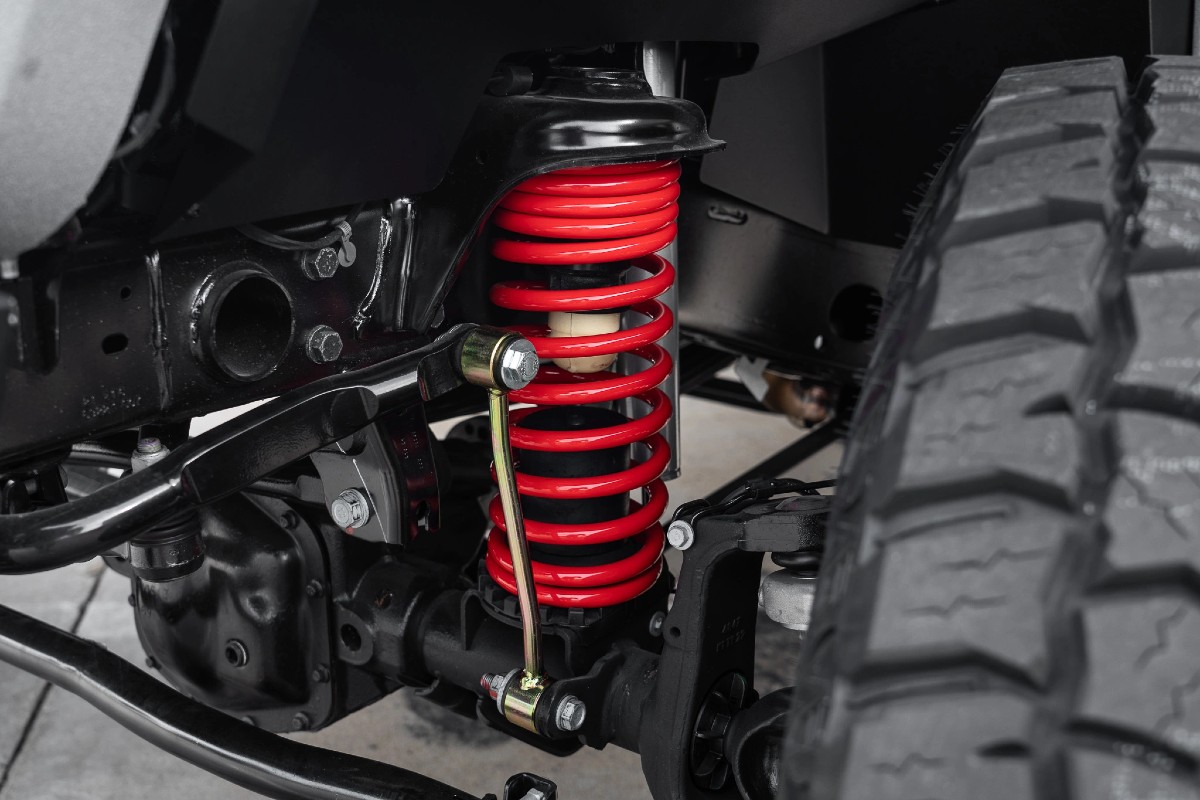Equipping your Jeep with a lift kit is typically one of the first steps in building your custom rig. If not the first, it’s still one of the most important upgrades, especially if you’re building an off-roader. The lift is usually accompanied by larger tires, but it should also be joined by another crucial upgrade that is often overlooked — a new driveshaft.
When you install a lift kit on your vehicle, it increases your vehicle’s angles and reduces the driveshaft’s clearance, which can lead to all sorts of problems if you don’t upgrade it as well. Today we’re going to dive into the details to show you how to choose the right driveshaft after you install a lift kit.

Why Replace Stock Driveshaft?
We already alluded to why you need to replace your stock driveshaft after installing a lift kit: it changes the geometry of your drivetrain as a whole. But what might these increased angles actually cause? Here are a few of the risks you face by not upgrading your driveshaft after a lift:
- Vibration at highway speeds
- Binding during suspension articulation
- Premature wear and tear on U-joints, CV joints
- Driveshaft failure under torque
The stock driveshaft that your Jeep was built with was designed for the factory ride height and moderate articulation, but installing a lift increases your height and demands more articulation. If your lift is less than 2.5 inches, you’ll probably be fine with your stock driveshaft. But if you lifted higher than that? It’s time for an upgrade.
Front vs. Rear Driveshafts
Because your lifted Jeep is undoubtedly a 4x4 vehicle, it comes with two different driveshafts — one in the front, one in the rear. It’s recommended that you replace both of them at the same time, but if you need to spread them out for budget reasons or anything like that, the front is typically the first to fail so you should start there. This is because factory front shafts use a CV-style joint, which doesn’t tolerate steep angles very well at all. These joints can wear out rather quickly after installing a lift kit, especially if your rig features lockers.
Measuring for the Right Fit
Obviously it’s going to be important for you to get the right fit when you order your new driveshafts, so it’s important to know how to measure properly. Here are the various things you need to check:
- Lift height; requirements will vary based on the height of your lift
- Drivetrain setup; whether you have a manual or automatic transmission, as well as the type of transfer cases you have, will affect length and joint type
- Pinion angle; you may need to dial in your pinion angle to match the new driveshaft if you’ve installed adjustable control arms
- Travel range; make sure to consider how much suspension travel you’ll be running, especially if you’ve installed extended bump stops or long-travel shocks
Choosing the Right Style
When it comes to choosing the right style of driveshaft, there are going to be two main options from which to choose: Double Cardan (CV) or U-Joint. CV driveshafts are ideal for steep angles and smooth highway performance. They’re quite common for replacing both the front and rear driveshafts on most Wrangler models.
U-Join Driveshafts, which will typically come in either 1310 or 1350 series, are built for strength and durability, especially in high-torque or rock-crawling situations. The 1350 shafts are perfect for extreme builds as they’re much beefier than their alternatives. If you have heavy-duty axles, lockers and 37-inch tires or larger, you’re likely going to want 1350s. For more moderate lifts or casual off-roading, you can opt for the 1310s or CV shafts.
Upgrade Your Driveshaft at LiftedJeeps.com
If you’re unsure of how to measure for the right fit or can’t come to a decision on which style you need, our expert technicians here at LiftedJeeps.com are more than equipped to answer any questions you might have and help you make the right decisions. Just reach out to us right here at the sales desk and we’d be happy to help!


